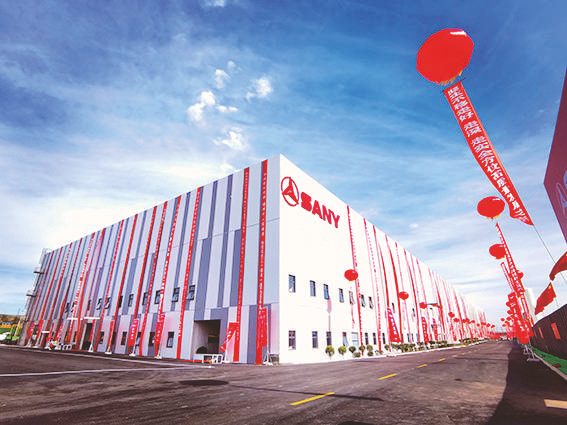Shuozhou upgrades industrial transformation with Sany Group


Sany Group's first phase of the 5 GW monocrystalline silicon project is put into production in Shuozhou. [Photo/Shanxi news network]
Shuozhou, a resource-rich city in North China's Shanxi province, has been accelerating industrial transformation and upgrading by fostering the development of seven key industrial chains including new materials, low-carbon silicon chips, and high-end ceramics while also optimizing its market environment, which has attracted a raft of major projects.
Early in September, the first phase of a 5 GW monocrystalline silicon project, in cooperation with China's engineering machinery giant Sany Group, officially went into production in Pinglu district of Shuozhou.
This project is the first large-scale photovoltaic monocrystalline silicon project in Shanxi, and Sany Group's first smart photovoltaic and green low-carbon iconic project in the province.
The photovoltaic panels produced by the project have reached the world's leading level in terms of photoelectric conversion efficiency.
According to Ma Runping, the deputy head of Pinglu district, after reaching full production, the project will have an annual output of 12,000 metric tons of monocrystalline silicon ingots and generate an annual output value of about 2.2 billion yuan ($307.53 million).
It is estimated to create over 600 job opportunities and achieve annual tax revenue of 300 million yuan.
The commencement of the project highlights how Sany Group's new energy industry sector in Shanxi has entered the production and operation stage.
It also marks a crucial step forward for Shuozhou as a resource-rich city in promoting industrial transformation and upgrading, and venturing into the manufacturing and new energy industries.
According to the cooperation agreement between Shuozhou and Sany Group, in the next two to three years, the group plans to invest in subsequent phases, with a total monocrystalline silicon production capacity exceeding 30 GW.
With the layout of downstream-related industries such as silicon wafer cutting and photovoltaic components, the annual output value of the joint ventures could reach over 10 billion yuan, creating tax revenue of more than 2 billion yuan.







